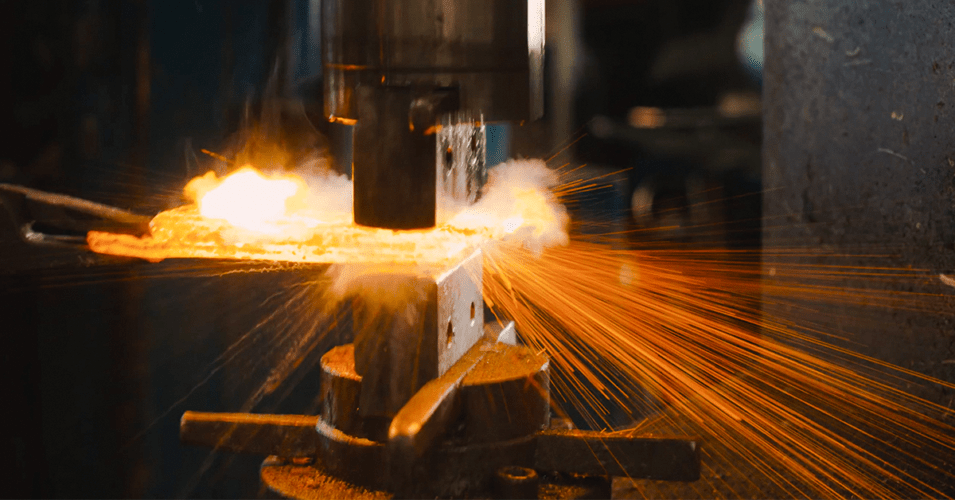Hot forging is a manufacturing process that has been shaping our world for centuries. It is a method that transforms raw materials into sturdy and resilient components, essential for industries ranging from automotive to aerospace. At its core, hot forging relies on three fundamental elements: heat, hammer, and precision. In this blog, we will explore these essentials and how they come together to create forged products of exceptional strength and durability.
- The Crucial Role of Heat
The journey of hot forging begins with the application of heat. Metals are heated to specific temperatures to make them malleable and easier to work with. This process, known as “heating,” is a critical first step. Here’s why it matters:
- Recrystallization: Heating the metal past its recrystallization temperature causes its grain structure to change. The grains become smaller and more uniform, which ultimately enhances the material’s mechanical properties, such as strength and ductility.
- Reduced Resistance: As the metal gets hotter, its resistance to deformation decreases. This means that less force is required to shape it, making the forging process more efficient.
- Preventing Cracks: Controlled heating also helps prevent the formation of cracks during forging. It ensures that the metal remains ductile and less prone to brittleness.
- The Mighty Hammer: Forging Force
Once the metal is brought to the right temperature, it’s time for the second essential element of hot forging: the hammer. In hot forging, hammers or presses are used to apply immense force to shape the heated metal. Here’s how it works:
- Impact Energy: The hammer delivers a significant amount of kinetic energy to the metal. This energy, when applied correctly, reshapes the metal to match the desired design or form.
- Homogeneous Structure: The repeated blows from the hammer help in further refining the grain structure of the metal, making it stronger and more consistent throughout.
- Tight Tolerances: Modern hot forging processes are incredibly precise. Computer-controlled hammers and presses allow manufacturers to achieve tight tolerances and intricate shapes.
- Precision: The Final Touch
The third essential element of hot forging is precision. Without precision, even the best heating and hammering will result in subpar products. Precision in hot forging includes:
- Die Design: Dies are molds that shape the metal during forging. They must be carefully designed to ensure the final product matches the desired specifications. Precision in die design directly impacts the accuracy of the forged components.
- Controlled Cooling: After the forging process, controlled cooling is essential to avoid warping or cracking of the finished product. Precision in cooling rates and methods ensures that the material retains its intended properties.
- Quality Control: Rigorous quality control measures are crucial in hot forging. This includes inspections for defects, dimensional accuracy, and material properties. Precision in quality control guarantees that the forged components meet industry standards.
Conclusion
Hot forging is a remarkable manufacturing process that transforms raw metal into strong, durable, and precisely shaped components. The essentials of hot forging—heat, hammer, and precision—work in harmony to create products that are vital to a multitude of industries. As technology advances, hot forging continues to evolve, offering greater control, precision, and efficiency. It remains a cornerstone of modern manufacturing, exemplifying the marriage of traditional craftsmanship and cutting-edge technology. So, the next time you see a sturdy automotive part or a robust aerospace component, remember the heat, hammer, and precision that went into its creation.
